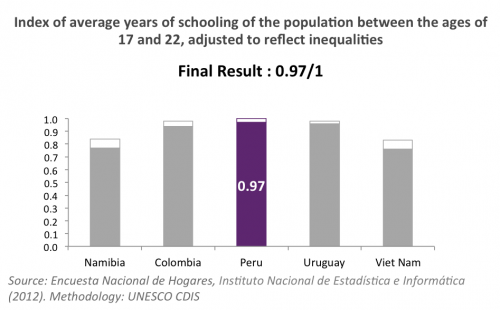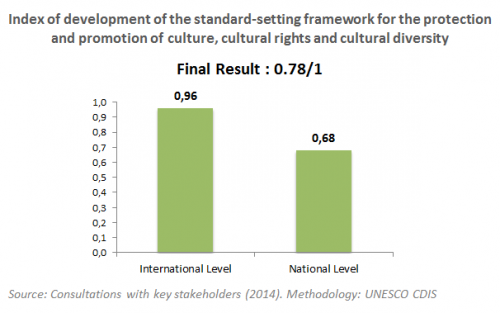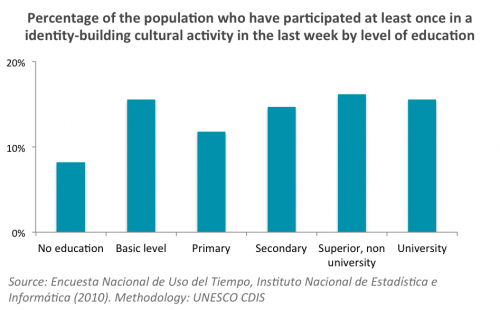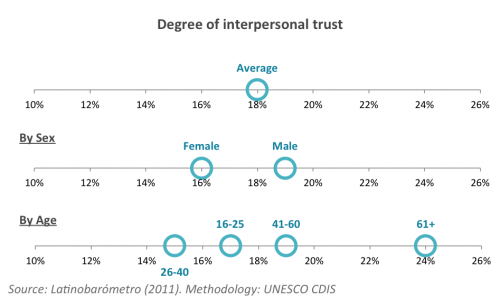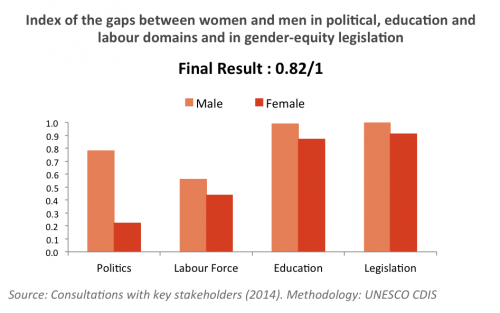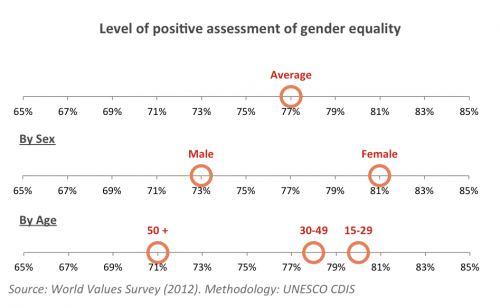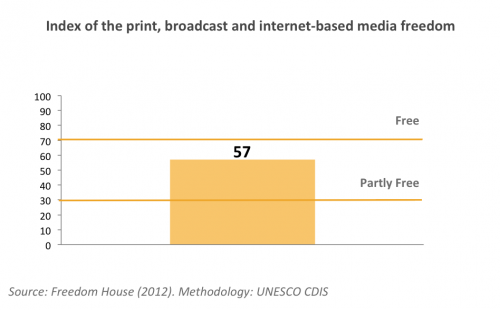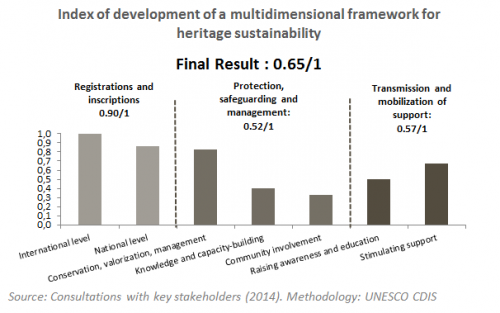
CDIS | Pérou's indicators
La culture est importante au Pérou : les indicateurs IUCD dévoilent le potentiel prospère du secteur culturel tout en soulignant certains obstacles en place qui l’inhibent et l’empêche d’atteindre son plein potentiel.
La contribution de la culture à l'économie nationale du Pérou n’est pas un chiffre négligeable; en effet la contribution des activités privées et formelles (à l'exclusion des activités culturelles gérées par le gouvernement) représente 1,58% du PIB en 2007 1. La culture offre également de grandes opportunités d'emploi dans le pays 2 (3,3% de la population active) et il y existe une demande de consommation pour les biens, services et activités culturelles, nationales et internationales 3 (1,56% du total des dépenses de consommation des ménages). Il convient de souligner que ces résultats mériteraient d'être complétés, en incluant la contribution des activités culturelles gérées par des entités publiques telles que les sites du patrimoine en raison de leur haute importance et contribution au développement du Pérou.
Le développement durable du secteur culturel ne peut être atteint sans l'appui du gouvernement. Les résultats des indicateurs du cadre normatif, politique et institutionnel pour la culture 8 9 (0,78/1; 0,50/1) suggèrent que les fondements d'une bonne gouvernance de la culture pour le développement sont en place, mais le soutien du gouvernement pourrait encore plus être développé. De même, le résultat de l’indicateur pour la durabilité du patrimoine (0,65/1) montre les progrès réalisés dans l’inscription du patrimoine matériel et immatériel et vise à hiérarchiser leur conservation et renforcer la participation active de la société civile.
Tandis que la gouvernance culturelle et les pouvoirs publics sont en train de créer un environnement favorable pour garantir le droit à l'éducation (0,97/1) 4, les résultats des indicateurs sur l'éducation artistique (5,7%) 6 et la formation des professionnels dans le secteur culturel (0,70/1) 7 nous indiquent que davantage d'efforts sont encore nécessaires pour encourager la croissance du secteur culturel et élargir l'accès, la jouissance et la participation des citoyens à la vie culturelle.
A l’heure actuelle, la répartition des infrastructures culturelles demeure inégale 10 (0,46/1), ce qui suggère qu’un accès plus équitable pourrait améliorer la participation, la consommation et la jouissance des biens et services culturels dans tous les groupes socio-économiques et donc renforcer le secteur.
Un accès accru aux activités et aux espaces culturels, pourrait également renforcer le potentiel de la culture sur le sentiments de compréhension mutuelle, de solidarité et de confiance, réduisant l'écart entre les indicateurs de la tolérance interculturelle et la confiance interpersonnelle (89,3%; 18%) 14 15. Pour que la culture puisse contribuer davantage au bien-être, l'accent devrait être mis sur la transformation des valeurs culturelles et des attitudes positives en résultats objectifs pour l'égalité des sexes (0,82/1) 17 en particulier dans les domaines de la participation politique et de la législation contre le harcèlement sexuel.
Les résultats de l’accès à Internet sont prometteurs (38,2%) 20 avec une croissance significative au cours des dernières années, mais ceux-ci pourraient encore être améliorés et contribuer ainsi à l’amélioration de la liberté d'expression (57/100) 19.
Voir la vidéo réalisée par le Ministère du Pérou pour la présentation des résultats ds IUCD au Pérou: Voir vidéo
Vous trouverez ci dessous le résumé analytique du Pérou en anglais et en espagnol.
1019
If we look at the contribution of culture to GDP by economic activity, we see that the greatest contribution of culture is performed by “printing services” (66.9%), while the second cultural activity with the largest share corresponds to “newspapers, magazines and periodicals” (13%). Printing services have improved their productivity thanks to new machinery and new technologies. This data could suggest that the country is currently going through a process of strengthening and acquiring equipment needed for the production of the culture sector.
1020
1021
1022
1023
1024
1025
1028
1029
1030
1033
12 PARTICIPATION TO GOING-OUT CULTURAL ACTIVITIES: 18.1% (2010) (ALTERNATIVE INDICATOR)
1034
13 PARTICIPATION IN IDENTITY BUILDING CULTURAL ACTIVITIES: 14% (2010) (ALTERNATIVE INDICATOR)
1035
1036
1037
1026
1027
1016
1017
1018
21 DIVERSITY OF FICTIONAL CONTENT ON PUBLIC TELEVISION (ALTERNATIVE INDICATOR): 25% (2013)



